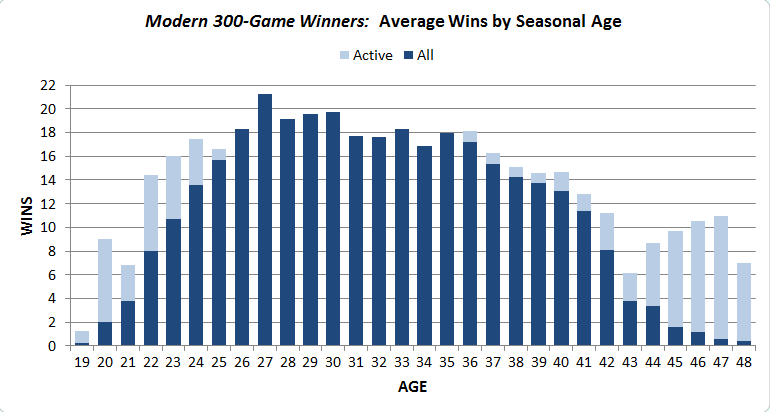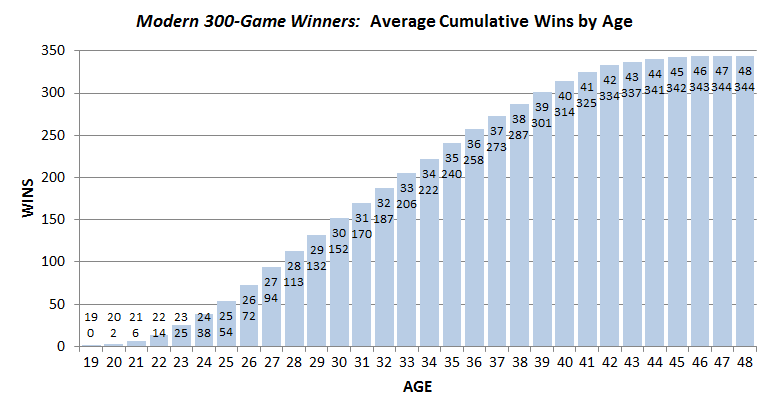Following up the Halladay/300-win discussion, here are two age-based graphs of the 18 modern* 300-game winners: wins by seasonal age, and cumulative wins by age
.
- The youngest debuts were 19: Christy Mathewson, Walter Johnson, Early Wynn and Nolan Ryan. Johnson (12 GS, 5 wins) was the only one to win a game or start more than three times.
- The oldest debuts were age 25: Eddie Plank, Lefty Grove and Phil Niekro.
- Wynn missed his age-25 season while in the service. All were active from 26-35.
- Mathewson was the youngest to reach 300, during his age-31 season (but probably before his 31st birthday). Walter Johnson was 32, Cy Young 34. Pete Alexander was 37; Greg Maddux and Steve Carlton, 38; Plank, 39; Warren Spahn, Tom Seaver and Roger Clemens, 40; Grove, Don Sutton and Tom Glavine, 41; Wynn, Gaylord Perry and Ryan, 43; Randy Johnson, 45; and Niekro, 46.
- Matty was also the youngest retiree, at 35. He logged all but 12 of his 373 wins in 14 years from age 20-33, averaging almost 26 wins per year, including a 12-year run of at least 22 wins each year. Niekro was the only one active at age 47-48.
- Most wins in his 20s: Mathewson, 263; W.Johnson, 249.
- Most wins in his 30s: Young, 241; Spahn, 202.
- Most wins in his 40s: Niekro, 141; Spahn & Young, 75.
As I mentioned in another comment, since Walter Johnson, no pitcher with more than 78 wins through age 25 has reached 300 wins. The closest were Bert Blyleven (287) and Robin Roberts (286).
__________
* “Modern” to me is since 1893, when the pitcher’s slab was moved back to 60′ 6″. Cy Young debuted in 1890, but since 439 of his 511 wins came in the modern era, I’ve included his first 3 years in the graphs.


